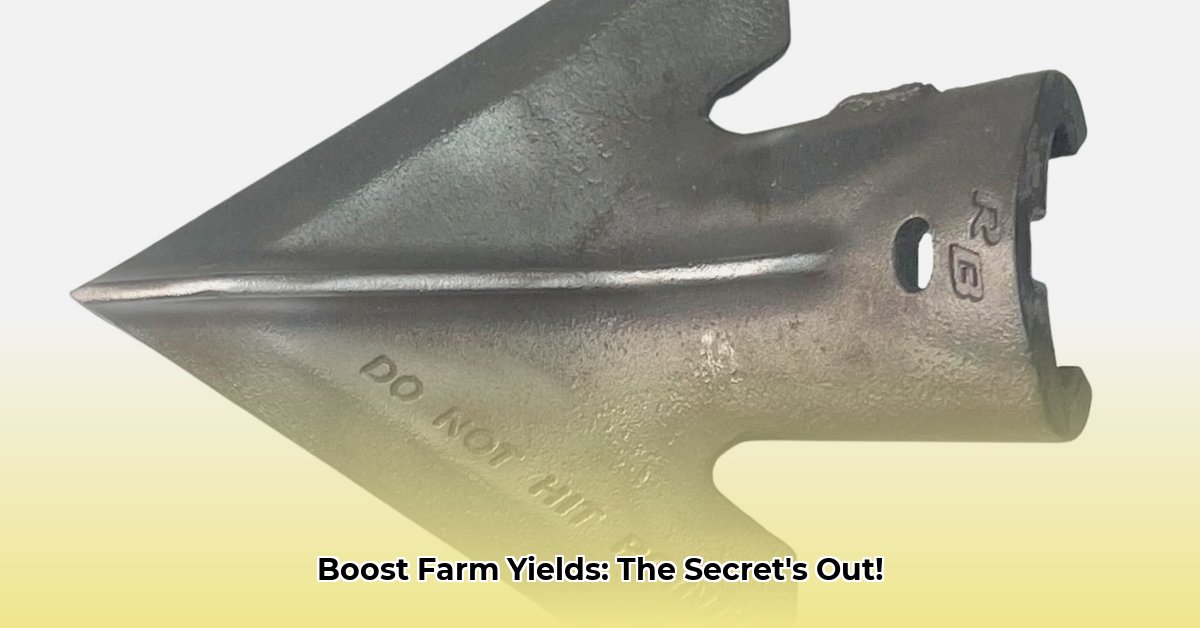
Choosing the Right Tractor Supply Cultivator Sweeps for Optimal Soil Health
Choosing the right cultivator sweeps is critical for maximizing farm yields while promoting sustainable agricultural practices. This guide provides a step-by-step approach to selecting and using cultivator sweeps from Tractor Supply, empowering you to make informed decisions for a healthier, more productive farm. For more on tractor implements, check out this helpful resource on tractor attachments.
Understanding Your Soil and Farming Needs: A Foundation for Success
Before selecting cultivator sweeps, assess your specific soil type and farming goals. Are you working with heavy clay, sandy loam, or something in between? Heavy clay soils require sweeps capable of deeper penetration, while lighter soils benefit from less aggressive tillage. What crops are you planting? Deep-rooted crops need deeper tillage, unlike shallow-rooted vegetables. Understanding these factors ensures you choose the right tool for the job. Remember, too much tillage can harm soil structure, leading to compaction and reduced water infiltration.
Selecting the Ideal Cultivator Sweep: A Comprehensive Guide
Tractor Supply offers a variety of cultivator sweeps, each designed for specific applications. This section outlines the key types and their suitability for various soil conditions and weed pressures.
One-Piece Sweeps: These versatile sweeps are suitable for a wide range of soil types. They provide a balance between effective weed control and minimal soil disturbance, making them a popular choice for many farmers.
Point-and-Share Sweeps: Ideal for aggressive weed management, especially against deep-rooted weeds. However, these sweeps cause more substantial soil disturbance than other options, a factor to consider for sustainable farming practices.
Pointed Sweeps: These sweeps excel at controlling surface weeds while minimizing soil disruption, ideal for conservation tillage approaches. They are less effective against deep-rooted weeds.
Duckfoot Sweeps: Designed for breaking up compacted soil, these sweeps are effective but can lead to significant soil disturbance and increased erosion risk if not managed carefully.
Choosing the right sweep is crucial: "Incorrect sweep selection can lead to inefficient tillage, soil damage, or wasted resources," says Dr. Emily Carter, Soil Science Extension Specialist at the University of Illinois.
Here's a summary table to help you decide:
| Sweep Type | Soil Type | Weed Control | Soil Disturbance | Sustainability Considerations |
|---|---|---|---|---|
| One-Piece | Most soil types | Moderate | Moderate | Good balance of efficiency and soil health |
| Point-and-Share | Heavy clay, high weeds | High | High | Use cautiously; consider alternatives |
| Pointed | Light to medium soils | Moderate | Low | Excellent for conservation tillage |
| Duckfoot | Compacted, heavy soils | Moderate | High | Use sparingly; prioritize soil health |
Optimizing Cultivator Sweep Usage: Tips for Maximizing Efficiency and Sustainability
Once you've chosen your sweeps, proper usage is essential for maximizing their effectiveness and minimizing negative impacts on soil health. These best practices will ensure long-term success.
Pre-operation Inspection: Always inspect your sweeps for damage before each use. A damaged sweep can lead to uneven tillage and decreased effectiveness.
Depth Adjustment: Adjust the depth of the sweeps based on soil conditions and the type of crop you are planting. Avoid excessive tillage.
Overlapping Passes: To ensure complete coverage and avoid missed areas, overlap each pass.
Regular Maintenance: Regular cleaning and lubrication extend the lifespan of your sweeps and maintain their peak performance.
Integrated Sustainable Practices: Combine cultivator sweep usage with other sustainable practices such as cover cropping and crop rotation to further enhance soil health.
Consider the long-term implications: "Sustainable agriculture isn't just about maximizing yield this season; it's about preserving and improving soil health for generations to come," explains Dr. Robert Miller, Agronomy Professor at Purdue University.
Sustaining Soil Health: A Long-Term Investment
Prioritizing sustainable farming practices directly contributes to long-term soil health and improved yields. Over-tilling can deplete organic matter, damage soil structure, and disrupt beneficial microbial activity. By carefully selecting and utilizing cultivator sweeps, you can minimize soil disturbance while efficiently preparing your land for planting. Remember, sustainable practices require thoughtful consideration and a commitment to responsible land management. The techniques outlined here promote efficient farming methods while protecting the land for future harvests.